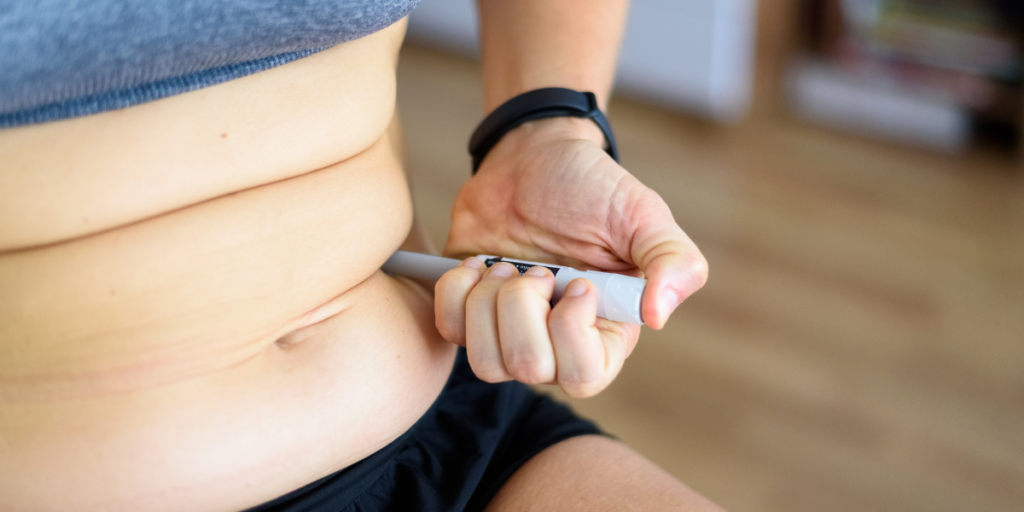Testosterone Replacement Therapy (TRT) affects the body in gradual phases. It works with your physiology, adjusting hormone levels and prompting changes that unfold over time. Some shifts happen early. Others take longer.
This guide breaks down what to expect as the weeks go by.
Before You Begin: The Setup Phase
The first step doesn’t involve medication at all. It involves blood work, symptom assessment, and a consultation to create your plan. Your provider looks at a range of markers: total and free testosterone, estradiol, SHBG, thyroid health, and more.
They may also review your metabolic profile to see how your body processes energy. Once you’re cleared for treatment, the protocol begins.
TRT isn’t just for men. Women can also experience low testosterone, especially during perimenopause or after surgical menopause. Symptoms in women may include fatigue, low libido, brain fog, mood swings, or decreased muscle tone. If these issues persist despite lifestyle efforts, testosterone therapy may be part of the solution.
Weeks 1-2: Subtle Signs
During the first two weeks, there may be small shifts. Testosterone levels start rising, but your body is still figuring out what to do with the change. The endocrine system adjusts slowly.
At this point, some men report:
- Slight improvement in focus
- A small increase in energy
- Better mornings with reduced grogginess
It’s too soon for major physical changes. This is more of a recalibration stage.
Weeks 3-4: Early Mental and Emotional Gains
Cognitive and emotional changes become more noticeable. You might find that your thinking feels clearer. Some patients describe this as a return to baseline, especially if they’ve been dealing with fogginess or low drive.
Other possible effects:
- Improved sleep patterns
- Fewer mood swings
- A spark in sex drive
This is often when doubts start fading and confidence in the process grows. It becomes easier to stay consistent with workouts, routines, and habits that support recovery.

Weeks 5-6: Increased Stamina and Physical Response
This period usually marks a noticeable shift. Workouts feel better. Recovery improves. Tasks that used to feel like a grind become manageable again. Libido strengthens. Erections (or arousal responses in women) may become more frequent and easier to maintain.
Typical feedback during this stretch:
- More consistency in daily energy
- Stronger engagement in physical activities
- Greater interest in intimacy and connection
- Steady emotional state
For many, this marks the first time they recognize significant change since starting TRT.
Weeks 7-8: Strength Gains and Body Composition Shifts
Testosterone influences muscle protein synthesis. As hormone levels stabilize, you may start to see measurable changes in body composition. Fat mass can begin to decrease, especially with supportive nutrition and training.
What men often report:
- Strength increases during resistance training
- Less fat around the abdomen
- More definition in the arms and chest
- Improved sexual performance
Energy tends to hold steady throughout the day. Sleep becomes more restful. Some describe waking up alert and ready to go.
Weeks 9-12: Full Integration and Noticeable Differences
By this point, testosterone levels have likely stabilized. The benefits are no longer occasional. They feel normal. You might forget what it was like to drag through the day or skip workouts due to lack of motivation.
Common experiences:
- Better physical performance
- Higher productivity
- More resilience under stress
- Confidence returning in both personal and professional settings
If TRT was started to address low mood, anxiety, or loss of direction, these symptoms have often receded by now. That said, follow-up lab work is important here. Your provider may adjust dosages or address other markers such as estradiol or hematocrit to keep you in the best range.
Beyond Three Months: Long-Term Support
At the three-month mark and beyond, the focus shifts to maintaining benefits and watching for any imbalances. Consistent therapy is only part of the equation. Sleep, stress, diet, and exercise habits will either amplify or limit your progress.
Long-term TRT can help support:
- Lean muscle retention
- Sexual health
- Mental sharpness
- Motivation and drive
This is also when you get to live in the improvements rather than chase them. People around you may notice the difference too, especially if you were dealing with low energy or flat affect before starting therapy.
A Closer Look at What Influences Results
Several variables impact how fast or how strongly you respond to TRT:
- Your starting testosterone levels
- Age
- Genetics
- Liver and kidney function
- Consistency of therapy
- Lifestyle support (nutrition, exercise, alcohol intake, sleep quality)
Not every individual has the same timeline, but most follow a similar pattern. Being consistent is more important than expecting sudden changes.
Why TRT at Katalyst Wellness Feels Different
Some clinics offer one-size protocols. Katalyst doesn’t. Every program is guided by board-certified physicians, with labs reviewed regularly and dosages based on more than just testosterone counts.
Your treatment includes:
- Ongoing lab reviews
- Transparent conversations about goals
- Real feedback and support
Looking for Testosterone Therapy San Diego, CA? You’re in the right place. Katalyst Wellness provides support that combines clinical experience with a real understanding of how men function day to day.
Next Step: Is TRT Right for You?
Low testosterone in men and women can show up as fatigue, lack of motivation, reduced sex drive, poor sleep, or stalled progress in the gym. If any of those sound familiar, TRT may be worth exploring.
Set up a consultation with the team at Katalyst Wellness. Get your labs. Ask your questions. Find out if this is the right fit for your body, your goals, and your long-term health.
Take the first step toward clarity, strength, and performance you can rely on every day.




